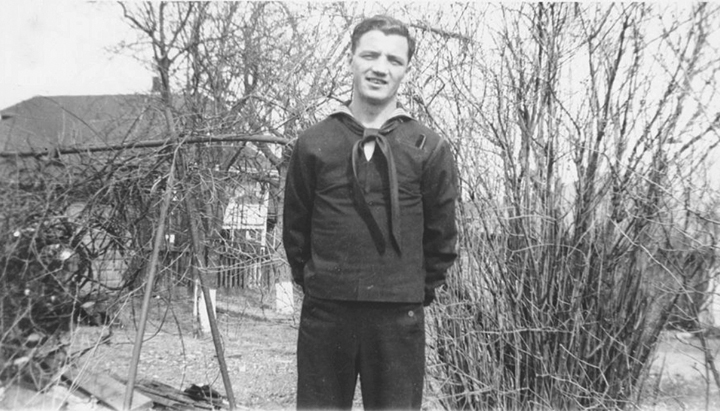
Dorchester Illustration 2568 John Gallagher
The intersection of Adams Street and Oakton Avenue was named a Hero Square for John Gallagher.
The following is from the City of Boston’s website https://www.cityofboston.gov/veterans/herosquares/hero-square/1137/
“John J. Gallagher United States Navy 28 August 1916 – 24 January 1944 John J. Gallagher was born on August 28, 1916 in Boston. As a resident of Dorchester, John entered the United States Navy soon after Pearl Harbor in 1942. John served as Third Class Water Tender (WT3) aboard the USS Plunkett, a destroyer. Gallagher was killed in the line of duty while fighting off an attack from the Luftwaffe on January 24, 1944. For the heroism displayed in his service to our country, John was awarded the American Campaign Medal, and the World War II Victory Medal. WT3 Gallagher is buried in Nettuno, a United States Military Cemetery in Anzio, Italy.”
Gallagher lived at 58 Oakton Avenue.
On May 12, 2022, Thomas F. Mulvoy, Jr., reviewed the recent book Unsinkable by James Sullivan. The following is excerpted from that article.
“Along with John “Johnny” Gallagher, of an Oakton Avenue, Dorchester, a family that saw four of its men serve during the war, the author uses the reporter’s tools to high effect – official papers, letters between home and sea, witness accounts from the heat of battle, phone calls, and, in three cases, nonagenarian memories stretching back 70 years to when the men reminiscing were young and everything was ahead of them.
From late 1942 on, the narrative moves along to a rhythm set to the tune of constant calls to battle stations as the ship took on assignment after assignment, crisscrossing waters rife with German ships and the armored sharks of the U-Boat service. The author occasionally administers a taste of the tedium that can beset a warship between assignments and during back-and-forth trips to ports of call 1,500 miles and more apart, but he never allows his readers to lose the sense that everyone on the ship is always on high alert for the deadly patches ever in the offing.
The long keystone chapter on the battle at Anzio is a masterly chronicle of chaos, courage under fire, pathos, and unremitting death at sea. In the late afternoon of Jan. 24, 1944, the Luftwaffe launched a dozen or more bombers against the Plunkett. As the continual strafing for 25 minutes against the defensive fire of the ship’s crew, one bomb, a 550-pounder, cratered through the main deck and into the guts of the ship, setting off a horrendous fire that left bodies and body parts strewn about the vessel and survivors trying to help the wounded while taking stock of the catastrophe.
The early tally over the next days out of the 285 men listed as serving on the Plunkett that month was 24 identified as dead, among them Johnny Gallagher of Oakton Avenue, Dorchester, his back fatally bloodied by shrapnel. There were 29 sailors called missing, meaning presumed dead.”
